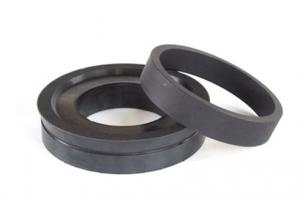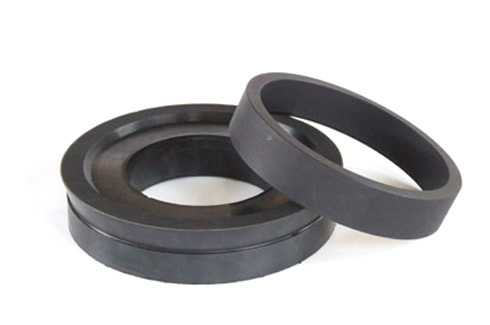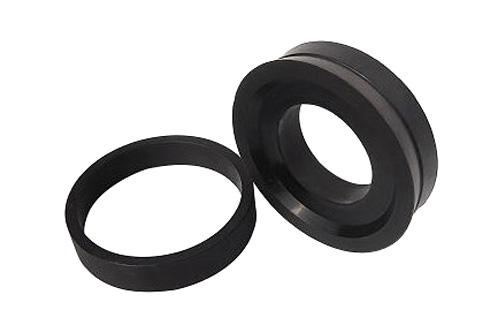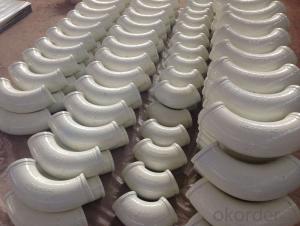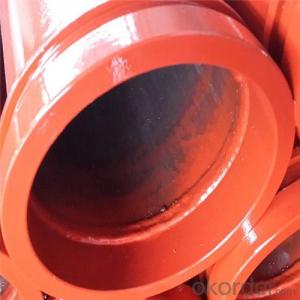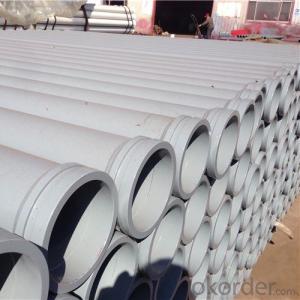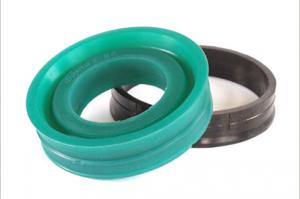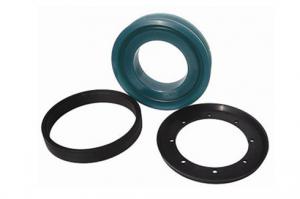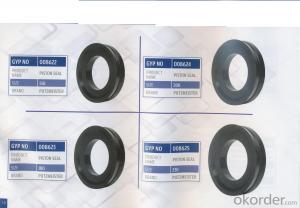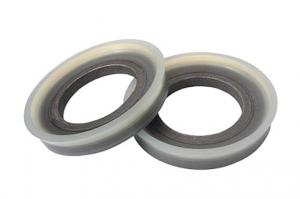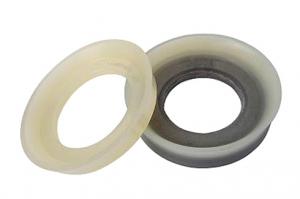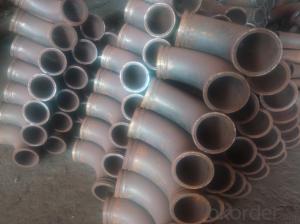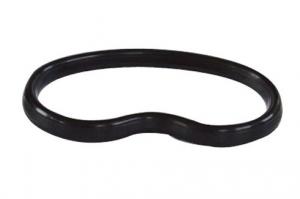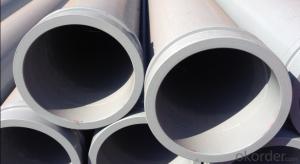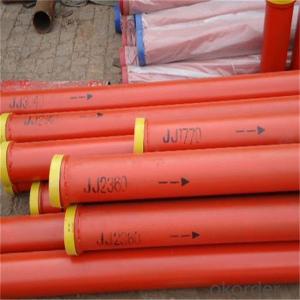Concrete Pump Putzmeister Seal Piston DN180 - DN230
- Loading Port:
- China Main Port
- Payment Terms:
- TT OR LC
- Min Order Qty:
- -
- Supply Capability:
- -
OKorder Service Pledge
Quality Product, Order Online Tracking, Timely Delivery
OKorder Financial Service
Credit Rating, Credit Services, Credit Purchasing
You Might Also Like
Brand: Schwing, Putzmeister, Sany,Zoomlion, IHI, Kyokuto, Sermac
Other products:
1) ST52 steel pipe, elbow, reducer
2) Wear-resisting board and Cuts ink
3) Coupling and seal ring for Putzmeister,Schwing, Sany
4) Rubber hose
5) Cleaning series and others
- Q: What is the function of a concrete pump outrigger?
- The function of a concrete pump outrigger is to provide stability and support to the concrete pump while it is in operation. The outrigger extends from the sides of the pump and is used to distribute the weight of the pump and concrete being pumped, preventing it from tipping over or causing any instability.
- Q: Which is the best home made concrete pump car?
- The second is heavy Futian Fortaleza, Xiangjian, Xugong, honedeli, the price is high, basically there is no big problem
- Q: How often should concrete pump control boxes be inspected and replaced?
- Concrete pump control boxes should be inspected regularly to ensure proper functioning and safety. The frequency of inspections and replacements will depend on various factors including the usage of the concrete pump, the operating conditions, and the manufacturer's recommendations. In general, it is advisable to inspect the control box at least once a year or as per the manufacturer's guidelines. However, if the concrete pump is used extensively or subjected to harsh operating conditions, more frequent inspections may be necessary. This includes inspecting the electrical connections, switches, buttons, and indicators for any signs of wear, damage, or malfunction. Additionally, it is important to conduct inspections after any significant maintenance or repair work on the concrete pump, as well as after any incidents or accidents. Regular inspections help identify any potential issues early on, allowing for timely repairs or replacements, thereby minimizing the risk of breakdowns or accidents. As for replacements, control boxes should be replaced if they are damaged beyond repair or if they are outdated and no longer meet safety standards. It is important to consult the manufacturer or a qualified professional to determine the appropriate replacement schedule based on the specific conditions and usage of the concrete pump. Remember, regular inspections and timely replacements of concrete pump control boxes are crucial to ensure the safe and efficient operation of the equipment.
- Q: What is the function of a concrete pump control lever?
- The function of a concrete pump control lever is to regulate the flow and direction of concrete being pumped, allowing the operator to precisely control the placement and distribution of concrete during construction projects.
- Q: Can I get spare parts for both concrete pumps with and without boom control systems?
- Spare parts for both concrete pumps, with or without boom control systems, are generally available. Numerous manufacturers and suppliers offer a diverse selection of spare parts to cater to various pump types. Whether your pump has a boom control system or not, reliable suppliers should have the necessary spare parts in stock. To ensure compatibility and check availability for your specific concrete pump model, it is advisable to directly contact the manufacturer or supplier.
- Q: How do I properly maintain and replace hydraulic filters in concrete pump spare parts?
- To ensure your equipment's longevity and efficiency, it is crucial to properly maintain and replace hydraulic filters in concrete pump spare parts. Here are some guidelines to follow: 1. Familiarize yourself with the manufacturer's recommendations: Understand the maintenance and replacement guidelines provided by the manufacturer. These instructions may vary based on the specific pump model and filter type. 2. Regularly inspect the filters: Conduct regular inspections to identify any signs of damage, clogging, or excessive wear in the hydraulic filters. Look out for dirt, debris, or other contaminants that may hinder their performance. Address any issues promptly. 3. Establish a maintenance schedule: Implement a regular maintenance schedule for the hydraulic filters. This should include regular inspections, cleaning, and replacement intervals. Adhering to a schedule will prevent unexpected breakdowns and keep the concrete pump running smoothly. 4. Clean the filters: If the hydraulic filters can be cleaned and reused, ensure to follow the proper cleaning procedure. This typically involves removing the filter, washing it with a suitable cleaning solution, and allowing it to dry thoroughly before reinstalling. Take care not to damage the filter during the cleaning process. 5. Replace as necessary: Over time, hydraulic filters become less effective at filtering out contaminants. It is important to replace them according to the manufacturer's recommended intervals or sooner if they appear excessively dirty or damaged. Always use genuine spare parts to ensure compatibility and optimal performance. 6. Install correctly: When replacing hydraulic filters, ensure they are installed correctly and securely. Pay attention to any seals or gaskets that may need replacement as well. Improper installation can lead to leaks or reduced filtration efficiency. 7. Monitor performance: After replacing the hydraulic filters, closely monitor the pump's performance. Watch for changes in pressure, flow rate, or unusual noises. If any abnormalities are observed, it may indicate a problem with the filter or other components, requiring further investigation. By following these steps, you can effectively maintain and replace hydraulic filters in your concrete pump spare parts, ensuring optimal performance and extending the equipment's lifespan.
- Q: How is a concrete pump pipe different from a regular pipe?
- A concrete pump pipe is specifically designed to be used in concrete pumping applications, whereas a regular pipe is more commonly used for general plumbing purposes. Concrete pump pipes are typically made of high-quality and durable materials to withstand the high pressure and abrasive nature of pumped concrete. They also have specialized ends, such as flanges or couplings, to provide a secure connection between the pump and the delivery system. In contrast, regular pipes may come in various materials and sizes, depending on their intended use in plumbing systems.
- Q: What is the purpose of a concrete pump accumulator?
- The concrete pump accumulator serves the purpose of storing energy and ensuring a continuous and uniform flow of concrete while pumping. It acts as a intermediary between the pump and the delivery line, guaranteeing a smooth and uninterrupted delivery of concrete. The accumulator functions by compressing air or nitrogen, which is then utilized to propel the concrete through the pipeline when the pump is not actively operating. This aids in maintaining pressure and preventing any obstructions or irregularities in the flow of concrete. Additionally, the accumulator can reduce the wear and tear on the pump by absorbing pressure fluctuations and providing a more controlled and consistent flow of concrete. In summary, the concrete pump accumulator aims to enhance the efficiency, reliability, and performance of the pumping process.
- Q: Can concrete pump spare parts be repaired on-site, or should they be sent to a specialized repair facility?
- In certain cases, it is possible to repair concrete pump spare parts on-site, while in others, it may be necessary to send them to a specialized repair facility. The choice between on-site repair or specialized repair depends on factors such as the nature and complexity of the repair required, the availability of skilled technicians and equipment, and the time constraints of the project. For minor repairs or replacements of simple components, it is often feasible to carry out the work on-site. This can include tasks like replacing hoses, seals, or filters, which can be completed quickly and easily with basic tools and equipment. Operators or maintenance personnel can often handle these types of repairs themselves, without the need for specialized technicians. However, for more complicated repairs or replacements, it is advisable to send the spare parts to a specialized repair facility. This is especially true for critical components such as hydraulic cylinders, valves, or control systems, which require specialized knowledge and expertise to repair effectively. Specialized repair facilities employ trained technicians who specialize in specific equipment and have the necessary tools and resources to diagnose and resolve complex issues. Furthermore, specialized repair facilities often have access to a broader range of spare parts and can obtain genuine parts from the original manufacturer. This ensures that the repaired spare parts are of high quality and compatible with the specific make and model of the concrete pump. Additionally, these facilities may offer warranties on their repairs, providing reassurance to equipment owners. Ultimately, the decision to repair on-site or send for specialized repair depends on the unique circumstances and available resources. It is crucial to evaluate the complexity of the repair, the availability of skilled technicians, and the potential impact on the project timeline before determining the most appropriate course of action.
- Q: How can a faulty oil cooler affect the pump's hydraulic system?
- The pump's hydraulic system can be affected in multiple ways by a defective oil cooler. Firstly, it is the responsibility of the oil cooler to maintain the hydraulic oil at an optimal temperature. If the oil cooler is flawed and fails to cool the oil efficiently, the hydraulic oil may become overheated. This can result in a decrease in the oil's viscosity, causing it to lose its lubricating properties. Consequently, the pump's moving parts may experience heightened friction and wear, leading to reduced efficiency and potential damage to the pump itself. Secondly, a defective oil cooler can lead to inadequate cooling of the hydraulic oil, resulting in elevated temperatures within the system. Elevated temperatures can cause the oil to oxidize, leading to the formation of sludge and varnish deposits. These deposits can obstruct the smooth operation of the hydraulic system, including the pump, valves, and other components, potentially causing malfunctions. Furthermore, a faulty oil cooler can also cause a decrease in the rate of oil flow. If the oil cooler is not functioning properly, it can restrict the flow of hydraulic oil, reducing the amount of oil available for the pump's operation. This can result in decreased hydraulic pressure, affecting the pump's performance and potentially causing issues such as reduced power output or inadequate operation of hydraulic actuators. In summary, a defective oil cooler can have negative effects on the pump's hydraulic system, including overheating, increased friction and wear, the formation of deposits, and a reduced oil flow rate. It is essential to regularly inspect and maintain the oil cooler to ensure proper functioning and prevent potential damage to the hydraulic system.
Send your message to us
Concrete Pump Putzmeister Seal Piston DN180 - DN230
- Loading Port:
- China Main Port
- Payment Terms:
- TT OR LC
- Min Order Qty:
- -
- Supply Capability:
- -
OKorder Service Pledge
Quality Product, Order Online Tracking, Timely Delivery
OKorder Financial Service
Credit Rating, Credit Services, Credit Purchasing
Similar products
Hot products
Hot Searches
Related keywords
